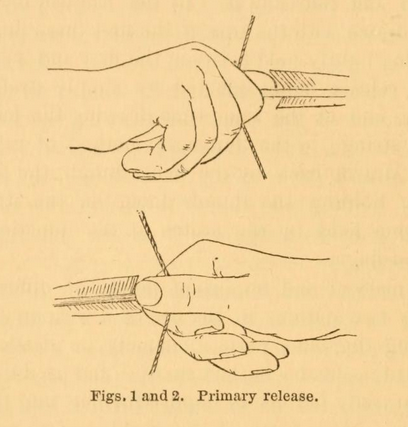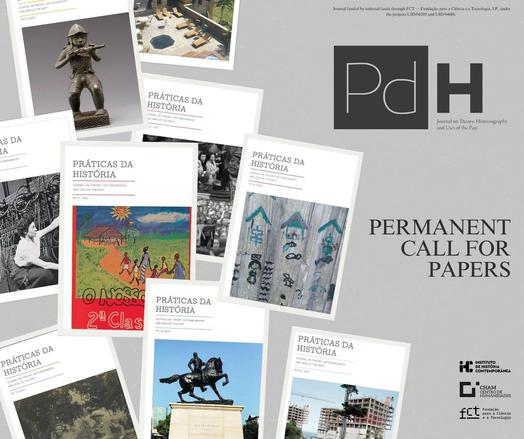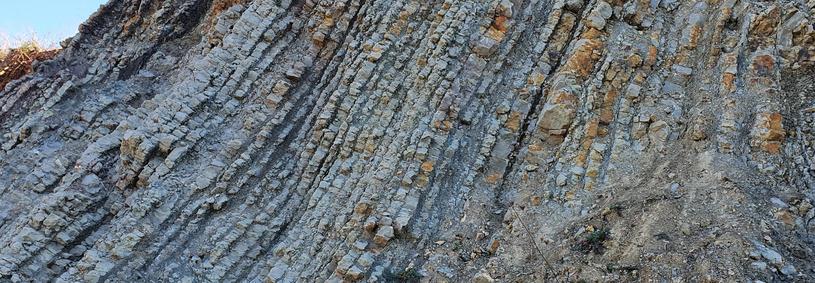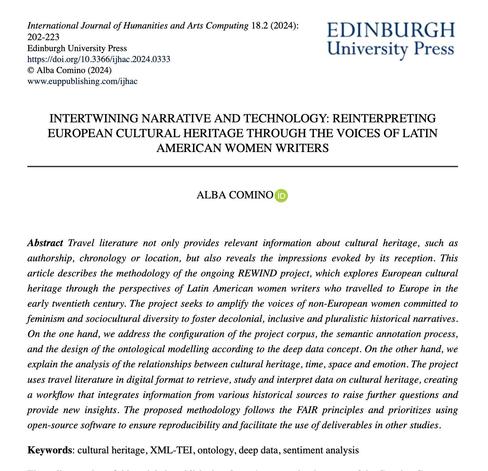How Heavy Were Iron Age Bows, Part 3
A relief from the reign of
Assurnasirpal II or Shalmaneser III of Assyria in the 800s BCE. London, British Museum, Museum Number 124579, photo asset number 112855001; see them for rights.
In previous posts I talked about how the bows used for war in Europe and Asia in the 15th and 16th century were much stiffer than hunters or target archers use today. They usually had draw weights on the order of 100-150 pounds, so you could draw the bow to full draw length by tying twine to the string, hanging the twine over a pulley, and hanging a 100-150 pound weight off it. Deer hunters in Canada and the USA tend to use draw weights around 40-70 pounds with traditional bows (compound bows with pulleys are another kettle of fish). Some researchers today invoke the heavy bow hypothesis and argue that bows in the ancient world were as stiff as Chinese, Turkish, and English bows 2000 years later. I am not convinced.
In those previous posts I talked about extant bows which can be reproduced and measured (or sometimes plugged into a physics model- there is a whole PhD thesis just on the physics of archery). Anecdotes about famous shots or feats of arms are a little too subtle for me to discuss in a blog post, and the surviving treatises on archery date to the sixth century CE and later so are past the period I focus on. But there is one other type of evidence!
Detail of
the relief above Hundreds of bows survive from the ancient world, but almost all are from Bronze Age Egypt. But thousands of detailed sculptures and vase paintings show archers drawing their bows in almost every society with cities. Many of these were made for kings who took pride in their skills as archers. And skilled workers like sculptors and painters were the backbone of archer militias around the world. While in ‘primitive’ societies every man can be a bowman, in agrarian societies many men were to poor to afford a bow and arrows or too malnourished to draw a strong bow. Militias in England and the Turkish world contained men whose only weapons were a knife and a cudgel or staff.1 Archery was not as expensive as gunnery, because you can use the same arrow many times and most of what you need is made from plants and animals not lead or sulphur, but eventually the arrow snaps or is lost and the bow breaks or just becomes too cracked and dented to trust. You needed to continually put in time and money to be an effective archer. The people with that time and money were the people who carved archers, painted archers, or ordered people to carve and paint archers. Archery was not just a game, it was one of the key acts by which rulers justified their authority. So every ancient sculpture of an archer is trying to teach us something, even if we have to look closely and be patient as we try to understand.
These Assyrian sculptures were not like a comic-book artist today drawing an archer for people who know nothing of archery and getting things wrong. They were more like a small-town journalist in the 20th century drawing a hockey player: something they and their audience saw regularly, participated in, and cared about.
The relief above comes from the time of Assurnasirpal II or Shalmaneser III in the 9th century BCE. It shows a two-man, three-horse chariot hunting Asiatic lions, which used to live in Syria and Iraq but are now confined to reserves in Gujarat, India because the hunters got a bit too effective. The artists have showed many details such as the bracer on the archer’s left arm to stop the string from bruising his skin. He seems to have the arrow on the back of his hand, like a modern Olympic archer, not on his thumb. The draw is long even though his bow is short, and he holds a second arrow in his draw hand so he can quickly put it to the string. The arrows have small fletchings which makes it easier to carry many in a quiver without the feathers getting entangled or crushing each other.
Detail of
the relief above If you learned archery in Canada or Europe, you probably learned to draw the string with three fingers hooked over the string, two below the arrow and one above. That is clearly not what our Assyrian archer is doing. We can see four fingers dangling loose.
About 150 years ago, an Englishman named Edward S. Morse went shooting with a Japanese gentleman. He quickly noticed some surprising things:
My interest in the matter was first aroused by having a Japanese friend shoot with me. Being familiar with the usual rules of shooting as practiced for centuries by the English archers, and not being aware of more than one way of properly handling so simple and primitive a weapon as the bow and arrow, it was somewhat surprising to find that the Japanese practice was in every respect totally unlike ours. To illustrate: in the English practice, the bow must be grasped with the firmness of a smith’s vice; in the Japanese practice, on the contrary, it is held as lightly as possible ; in both cases, however, it is held vertically, but in the English method the arrow rests on the left of the bow, while in the Japanese method it is placed on the right. In the English practice a guard of leather must be worn on the inner and lower portion of the arm to receive the impact of the string; in the Japanese practice no arm-guard is required, as by a curious fling or twirl of the bow hand, coincident with the release of the arrow, the bow (which is nearly circular in section) revolves in the hand, so that the string brings up on the outside of the arm where the impact is so light that no protection is needed. In the English method the bow is grasped in the middle, and consequently the arrow is discharged from a point equidistant from its two ends, while the Japanese archer grasps the bow near its lower third and discharges the arrow from this point. This altogether unique method, so far as I am aware, probably arose from the custom of the archers in feudal times shooting in a kneeling posture from behind thick wooden shields which rested on the ground. While all these features above mentioned are quite unlike in the two peoples, these dissimilarities extend to the method of drawing the arrow and releasing it. In the English method the string is drawn with the tips of the first three fingers, the arrow being lightly held between the first and second fingers, the release being effected by simply straightening the forefingers and at the same time drawing the hand back from the string; in the Japanese method of release the string is drawn back by the bent thumb, the forefinger aiding in holding the thumb down on the string, the arrow being held in the crotch at the junction of the thumb and finger.
Morse went on to document everything he could find about methods of drawing the bow, visiting embassies, speaking to members of indigenous nations, collecting photographs and writing to contacts around the world. His book is a joy to read because it is full of the best Victorian scholarship driven by pure scientific curiosity and a realization that he could be the first person to answer a question in writing. He gave the world the names for five ways of drawing the bow, namely primary, secondary, tertiary, Mediterranean, and Mongolian. One of the most educational parts of the world of martial arts is learning that everyone disagrees about everything but almost everyone tells you that their way is the ONE TRUE WAY (Herodotus teaches the same lesson, but some people learn better in person).
The sculpture seems to be showing what Morse called the primary release, where you pinch the arrow against your pointer finger with your thumb. This is the way that most children around the world try to shoot if you give them a bow and arrow. It works best if the nocks are knobbed or ridged to help your finger grip the arrow. It does not work well with a heavy bow, but does work well for quick snap shots where the arrow is released the instant it reaches full draw.
Its also possible that the relief shows a form of the Mongolian release, where the thumb is hooked around the string and the pointer finger holds it in place. The Mongolian release was the ordinary release in recent times by peoples influenced by Eurasian steppes nomads such as Ottomans, Han, and Japanese. Archers who use the Mongolian release usually wear a broad ring on their thumb to take the weight and smooth the movement of the string as they loose. These are not common in ancient sites from the Near East, even though bone and bronze and hard stones like jade are archaeologically visible. In addition, Assyrian sculptures usually show the arrow on the left side (outside, back-of-hand side) of the bow, whereas archers using the Mongolian release usually shoot on the right side (inside, thumb side). Morse goes through some of the possibilities in his article, which I link below.
A remarkable thing is that in the 9th century BCE, the Assyrians were a nation of archers and not a spear-and-bow nation like Herodotus’ Persians. Sculptures such as the Balawat Gates show Assyrians using bows and arrows and short weapons but never spears and shields. They carried spears on their chariots with axes and swords and quivers of arrows, but lacked dedicated groups of spearmen. The Akkadian term for footsoldier was bowman (LÚPAN = qaštanu). At the Late Bronze Age site of Nuzi, most houses contained a quiver of arrows, but there were just give spearheads, and the thousands of tablets preserved when the city was burned to the ground have few clear references to spears or spearmen or spearmakers.2 So this is a sculpture from a nation which saw the bow as the preeminent weapon, but it does not show the same kind of archery that Turks or Manchus or Scots used in recent times.
A luxury manuscript of Bertrandon’s description of the Ottoman empire and its people. Their horsemen were skillful and well-equipped when he visited in 1432, but as for the foot, some had a sword but no bow, others nothing but a stave (
que ung baston). Elsewhere he talks about the differences between Turkish and Burgundian bows and arrows. Bibliothèque nationale de France. Département des Manuscrits. MS Français 9087
https://gallica.bnf.fr/ark:/12148/btv1b8449038d/ One of the beautiful things about archery before the 20th century is that even though a bow and arrows are very simple (two sticks and a piece of string) there were dozens of different ways of using them in war. Some nations loosed in a high arc from several hundred yards away, and others closed in and shot flat and level. Some pulled stiff bows, and others tried to shoot as fast as possible. Some used a long draw and others used short. Some massed their archers together and released hails of arrows, while others scattered a few archers among the shield-bearers. Some spread out and ducked and dodged incoming darts, while others packed together behind shields or barricades. Some used the bow for both war and hunting, while in others an aristocrat who shot game with a bow would never dream of going to war with such a humble weapon. There were ingenious devices like the arrow guide (Persian nāwak, Greek σωλενάριον) to let an archer take a long draw with a short light arrow so he didn’t have to chose between carrying many arrows and taking a powerful accurate shot. There were clever tricks like shooting almost vertically to drop arrows on the enemy above their shields or behind a barricade. An archer who wants to shoot many arrows one after another cannot shoot a very heavy bow, while an archer who wants to pierce shields or armour cannot shoot a very light bow. This is a notable contrast to early firearms, where Catholics, Protestants, Ottomans, Chinese, and Japanese all figured out that fire by countermarch was the best way to use large numbers of matchlocks, and everyone with flintlocks agreed that firing two or three ranks at a time from one end of the line to the other was the best way to use large numbers of flintlock muskets. By 1776, tiny variants like giving a file as much as a yard and a half of width to stand in and making them move at a trot were seen as shocking innovations, and they worked best in rather small battles.3
Ancient historians have hardly begun to explore the possibilities. I know of only one article on the mechanics of ancient skirmishing, by Adam Anders, whereas there are dozens on Greek hoplite combat. Bret Devereaux’ post on why archers probably didn’t shoot volleys is the only academic treatment of the subject I have read. And there are many nuances in the art, from the multiple draws shown in ancient Greek vase paintings, to Assyrian reliefs where archers facing left seem to draw differently than archers facing right.
Ten years ago I posted about Roman archery in response to a viral video by Lars Andersen. Everything he does except perhaps the parcour is documented in texts and art around the world, although some of his ways of doing those things may not be the exact way ancient archers did them. There certainly were standing long-ranged archers, whether English archers shooing at butts several hundred yards away, or Bohemian crossbowmen taking aim from behind a pavise shield, but there were many other kinds of archery on ancient and medieval battlefields. But this is not the book on ancient archery which I hope to write one day. So lets turn back to draw weights and round off this post.
A Parthian archer uses the three-fingered Mediterranean draw. Shell relief from Shami, Iran, in the Tehran Archaeological Museum after Georgina Herrmann,
The Iranian Revival (Oxford 1977) frontspiece
As far as I know, archers who draw heavy bows (more than 100 pounds of draw weight) all use either the Mediterranean three-finger draw or the Mongol thumb draw. Those are two excellent ways of drawing the bow, and some historical treatises recommend learning both, just like they recommend practicing shooting with either hand and practicing drawing sometimes to the earlobe, other times to the jaw, and other times to the shoulder. I don’t know any heavy-bow archer today who uses anything but the Mediterranean or the Mongolian draw, because drawing a heavy bow is an extreme physical feat and there are only a few ways to do it that don’t risk physical injury. Onetime commentator Ryddragyn (warning: YT) found Papuan archers who use something called the tertiary release with unfletched arrows and self bows but their draw weights are more like 80 or 90 pounds than 100-150, and when he tried the bowstring cut his hand. So archers who are using the primary release must be using lighter bows. Philip Henry Blyth estimated that the primary draw works for up to a 40 pound draw, and that seems a reasonable estimate although everything will depend on the archer and the arrow (modern smooth plastic nocks are a bad choice for this draw but filing lines onto them might help, or 3d printers could create nocks that give more purchase to the fingertips).4
Many ancient paintings and sculptures seem to show the primary release, and hunters in some parts of the world were still using it in the 19th century. So this cannot be dismissed as just an artistic convention because we have ethnographic parallels. Ancient Egyptian art shows archers with composite bows using different draws than archers with self bows (wooden bows).
Before we part, I would like to bring in one more piece of evidence. Lets have a look at the dying lion in the bottom of the relief.
Detail of the same relief in the British Museum
This lion is having a bad day. But notice that he has three arrows in him and is still mostly alive. Today its common for an arrow to pass through a deer and continue out the other side (pass-through). Most bow hunters don’t use heavy bows, but they shoot at close quarters like the lion hunters in the relief. Today Asiatic lions are similar in weight to North American deer although everything depends on the sex of the animal and the specific animal. So these lions should be about as resistant to arrows as a deer. And the sculptor does not seem to think that one arrow will reliably kill. A local police officer recently needed four rounds from an AR to finish off a deer that had been hit by a car, and perhaps the Assyrians believed that “there is no overkill, there is just ‘open fire’ and ‘time to reload.'”
Showing the arrows stuck into the lion could be an artistic convention like the modern TV shows and movie artists which show arrows sticking into targets instead of passing through and disappearing (and show arrows penetrating all kinds of armour instead of bouncing off or getting stuck before they hit flesh). I can’t think of any film or TV show in which an arrow passes through someone and keeps going, from Wishbone on Joan of Arc to the latest big-budget movie. Scott Manning whom I mentioned in an earlier post has an academic paper on comic books where characters get peppered with arrows like St Sebastian or St Edmund because its a striking visual motif. But needing three arrows to kill and failing to send them all the way through is certainly consistent with relatively light draw weights in Assyria in the 9th century BCE.
While many sport archers were reluctant to learn that soldiers in 15th-16th century Eurasia used very heavy bows, its wrong to overcorrect and assume that therefore all bows for war in all cultures and all periods had heavy draw weights. Neither art nor surviving bows supports this. One-true-wayism is always a mistake.
Financial storms are coming like arrows in a Scythian battle. Unlike most Internet writers these days I don’t have a spouse or a salaried job subsidizing my time. If you can, please support this site. I touch on things of interest to many different communities, so sharing with friends and colleagues helps too! People are much more likely to acknowledge something if it comes from someone they know.
Further Reading
Anders, Adam (2015) “The ‘Face of Roman Skirmishing’.” Historia 64.3 pp. 263–300
Spyros Bakas, “The shooting methods of the archers of the Ancient Greek World 1400 BC – 400 BC,” unpublished conference paper (2014) https://www.academia.edu/9973149/The_shooting_methods_of_the_archers_of_the_Ancient_Greek_World_1400_BC_400_BC
Edward S. Morse, “Ancient and Modern Methods of Arrow-Release,” Bulletin of the Essex Institute, Vol. XVII, Oct-Dec 1885, pp. 1-56 https://archive.org/details/ancientmodernmet00mors/
Kooi B.W. 1983 On the Mechanics of the Bow and Arrow. PhD thesis, Rijksuniversiteit Groningen. https://www.bio.vu.nl/thb/users/kooi/ (this page also has other publications by the author, who has provided consultation services for archaeologists and bowyers)
Szudy, Matthew Jamie (2015) Archery Equipment in the Neo-Assyrian Period. PhD thesis, Universitä Wien. https://utheses.univie.ac.at/detail/33864 (focus on arrowheads)
Faris and Elmer’s Arab Archery (1945) https://www.archerylibrary.com/books/faris-elmer/arab-archery/
Latham’s Saracen Archery (1970) https://archive.org/details/latham-paterson-saracen-archery/
Edward McEwen, “Persian Archery Texts: Chapter Eleven of Fakhr-i Mudabbir’s Adab al-Harb (Early Thirteenth Century),” Islamic Quarterly 18 (1974) pp. 76-99 https://www.proquest.com/docview/1304274762/ (more a collection of anecdotes than a treatise, but glorious)
Gao Ying, The Way of Archery: A 1637 Chinese Military Training Manual, tr. Jie Tian and Justin Ma (Schiffer Publishing, 2015) https://www.thewayofarchery.com/book.html
The Bow vs. Musket blog has many anecdotes about archery after the introduction of portable firearms https://bowvsmusket.com/
Anonymous peri Toxeias (an English translation is in the mail to compliment the Greek text and German and Italian translation which I already have)
Iliad 4.122-123 and Procopius on drawing to the breast or the nipple rather than the ear
(scheduled 12 May 2025, revised 15 May)
- The English militia laws and rolls are published many places (I will talk about one in “Linen Armour in the Frankish Countries, Part 2”), while the Ottoman raiders are in Oman’s Art of War in the Middle Ages, volume 2 page 347 (he cites Bertrandon de la Broquière, a very interesting character). Europeans who faced Turks from the First Crusade to the 15th century noticed that ordinary Turkish shepherds just had a bow and a knife or club, while rich men had swords or lances and sometimes even helmets and armour. As late as 1813, the Czar’s Central Asian levies had just horses, bows, and arrows but no swords or lances (this source’s eyewitness description of fighting Turks could have been written any time in the previous 700 years). ↩︎
- Timothy Kendall, Warfare and Military Matters in the Nuzi Tablets (PhD Dissertation, Brandeis University, 1974) pp. 250, 251 ↩︎
- Matthew H. Spring, With Zeal and With Bayonets Only: The British Army on Campaign in North America, 1775-1783 (University of Oklahoma Press, 2010) which I have not read and Mark Urban, Fusiliers: The Saga of a British Redcoat Regiment in the American Revolution (faber & faber: London, 2007), pp. 66-69 which I have. ↩︎
- Blyth, The Effectiveness of Greek Armour Against Arrows, p. 62 ↩︎
#ancient #archery #heavyBowHypothesis #methodology #NeoAssyrian










